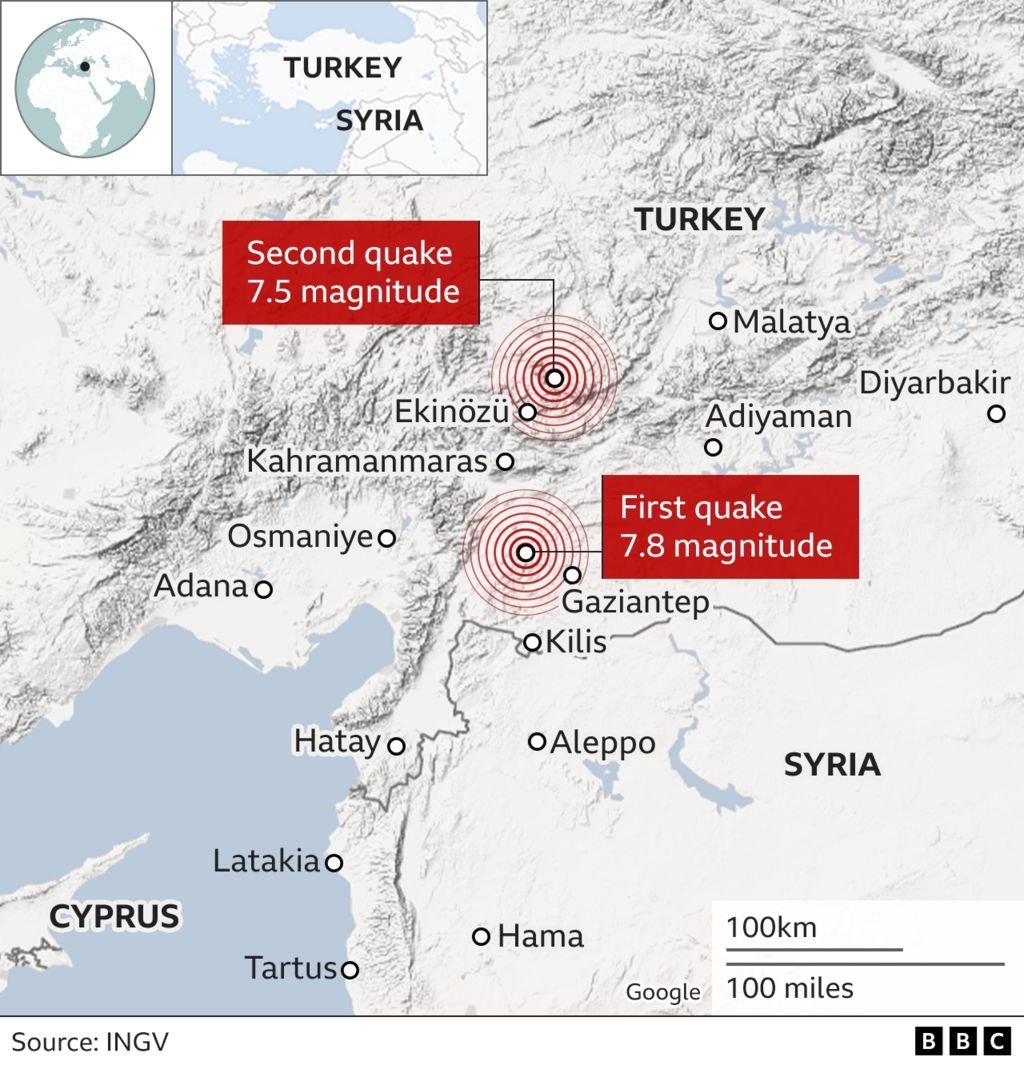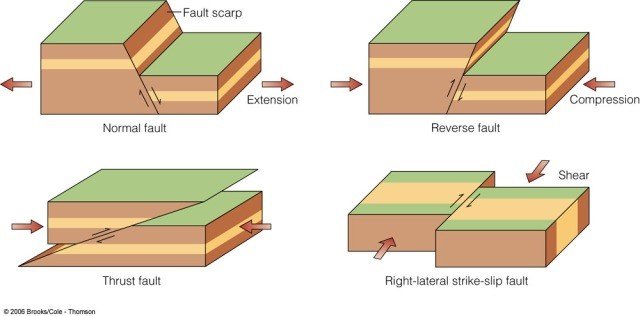08 Feb 2023 Earthquake in Turkey
Earthquake in Turkey
This article covers “Daily current events “and the topic is about ‘Earthquake in turkey’ which is in news, it covers “Physical geography” In GS-1, the following content has relevance for UPSC.
For Prelims: About Earthquake,
For Mains: GS-1, Physical geography
Why in news:
- An earthquake with a magnitude of 7.8 recently caused strong vibrations to be detected in Turkey along the well-known Anatolia tectonic block fault line.
- The earthquakes were “strike-slip quakes,” emerging from relatively shallow depths.
- It is being called the worst calamity since 1939 and the worst earthquake Turkey has experienced in more than a century. The Erzincan Earthquake of 1939 was responsible for “severe destruction in the Erzincan Plain and the Kelkit River Valley.”
Reasons which Predisposes Turkey to Earthquake
- The complex interactions between the African, Arabian, and Eurasian tectonic plates as well as the Anatolian tectonic block dominate tectonic activity in the Eastern Mediterranean region, which includes Turkey, Syria, and Jordan.
- The East Anatolian Fault (EAF), which is located in the southeast, and the North Anatolian Fault (NAF), which runs through the country from west to east, are the two main faults that the Anatolian tectonic plate, on which Turkey is located, borders.
- The meeting place of the Eurasian and Anatolian tectonic plates, known as the NAF line, is “Particularly Devastating.”
- An important portion of the Anatolia block’s translational motion towards Eurasia and Africa is accommodated by the NAF, a right-lateral strike-slip structure in northern Turkey.
- The Anatolian Plate and the Arabian Plate, which are migrating to the north, are separated tectonically by the EAF. From eastern Turkey, it travels 650 kilometers to the Mediterranean.
- The Aegean Sea Plate, which is submerged beneath western Turkey and southern Greece in the eastern Mediterranean Sea, also adds to the seismic activity in the area.
- According to one estimate, a third of the nation, including the areas around the major cities of Istanbul and Izmir and the region of eastern Anatolia, is at a high risk of earthquakes, and it is believed that 95% of Turkey’s land mass is earthquake-prone.

Earthquake in Turkey
Difference between Regular Earthquakes and Strike-Slip Earthquakes:
- Plating Motion: Two tectonic plates pass each other horizontally in a strike-slip earthquake, whereas they move vertically in a normal earthquake.
- The various forms of earthquakes include tectonic earthquakes, volcanic earthquakes, and earthquakes that are caused by humans.
- Strike-slip earthquakes happen along transform boundaries, like the San Andreas Fault in California, whereas normal earthquakes happen at divergent or convergent plate boundaries, where the plates move vertically, like around the Pacific “Ring of Fire.”
Causes:

Earthquake in Turkey
Damage is done by shallow earthquakes:
- A shallow earthquake is an earthquake that happens close to the surface at a shallow depth, usually inside the Earth’s crust. They normally have a depth of less than 70 km and can cause severe ground trembling and surface faulting.
- Since the seismic waves’ energy is released closer to the surface, there is stronger ground motion and more violent shaking, which makes them frequently more destructive than deep earthquakes.
- In addition to triggering landslides, rockfalls, and other secondary hazards, this can harm infrastructure and structures.
- A multitude of variables, including the earthquake’s magnitude, its distance from the epicenter, its depth, the type of soil present, and the surface geology, all affect how much damage an earthquake does.
Earthquake
- Seismic waves are produced when the Earth’s surface shakes, causing an abrupt release of energy in the lithosphere, the planet’s rocky outer layer.
- Particularly in a region where houses and other buildings are shoddily built and landslides are frequent, earthquakes can result in serious damage.
- The focal point of an earthquake is commonly referred to as the hypocenter.
- The area just above the hypocenter at ground level is the epicenter.
- It is measured on the Richter scale.
Theory of Plate Tectonics/Plate Tectonic
- Alfred Wegener’s hypothesis of “continental drift,” which gave rise to plate tectonic theory, was first proposed in 1915.
- According to the idea of plate tectonics, the Earth has two layers: the asthenosphere, which is fluid (moldable, partially molten), and the lithosphere, which is a stiff outer layer that is normally around 100 km (60 miles) deep.
- The lithosphere is made up of several smaller plates as well as seven very massive continental and oceanic plates, six or seven medium-sized regional plates, and others.
- These plates shift in relation to one another.
- They interact along their boundaries and often move at rates of 2 to 4 inches (5 to 10 cm) each year).
Source:
YOJNA IAS DAILY CURRENT AFFAIRS ENG MED 8th FEB
Get Current Affairs from Yojna IAS


No Comments